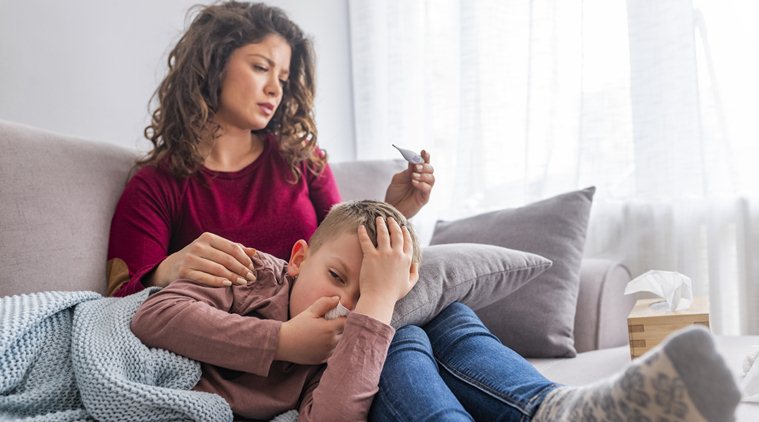
It is important to take these measures at the early stage of the symptoms to prevent a full-fledged ailment. Visit your doctor to check whether medical intervention is necessary.

While cold and cough are common among children during winter or the onset of monsoons, close proximity to those suffering from the ailment also contributes to the spread of infection. Younger children tend to experience more recurrent colds due to the highly infectious viruses.
When children play together at home, school or closed surroundings, one must take some measures to prevent spread of the ailment. One solution is to keep children away from each other, particularly when one or more have been afflicted by cold and cough.
Also known as an upper respiratory tract infection, running noses, sneezing and coughing are extremely common during winters. The symptoms, can last an entire week or more, include nasal congestion, cough, sore throat and even headaches. The most effective way to treat this is to hydrate well and get plenty of rest.
Common winter infections among children
Flu or influenza
Commonly known as the ‘flu’, influenza is highly contagious and symptoms include high fever, sore throat, headaches, muscle pain and coughing. The best prevention is a flu shot and while there are antiviral medications available, the best cure is to get lots of rest and drink fluids.
Strep throat
Strep throat, a fallout of cold and cough, is prompted by bacterial infection and is more painful than a regular sore throat. It’s commonly seen in school-going children, spreading through sneezing and coughing. During this, one may have trouble swallowing, besides having fever, headache and swollen lymph nodes in the neck. While antibiotics can help in curing the infection, drinking warm water also brings relief from pain.
Bronchiolitis
A common respiratory infection among children, the Respiratory Syncytial Virus (RSV) is the most common cause of bronchiolitis. It causes inflammation of the airway in the lungs, leading to mucous clogging, making breathing difficult. The illness is accompanied by nasal congestion, low-grade fever, cough and wheezing. Besides antibiotics, get plenty of rest and drink lots of water.
Pneumonia
This is an infection of lungs, caused by bacteria and exhibiting symptoms such as cough, fever and breathing difficulty. Long-term diseases like asthma, cancer or heart problems make one more susceptible to pneumonia. It may even call for hospitalisation. Contact your healthcare provider if you suspect pneumonia.
Preventive steps
Here are some simple things you and your child can practice to reduce their chances of getting or passing on a cold:
- Wash your hands with warm soapy water after sneezing, coughing and blowing noses, and before eating.
- Cough into your elbow to avoid getting germs on your hands.
- Don’t share drink bottles, cups and utensils with other children who have colds.
- Supplements like vitamin C can reduce the duration and severity of colds in children.
- Children must also sneeze into a hanky or cover the nose and mouth during sneezing and coughing to help prevent the spread.
- Wearing a mask till one is better is also beneficial to stop the spread to other family members and friends.
It is important to take these measures at the early stage of the symptoms to prevent a full-fledged ailment. Visit your doctor to check whether medical intervention is necessary.
(Inputs: Dr Parimala V Thirumalesh, Senior Consultant – Neonatology & Paediatrics, Aster CMI Hospital.)
For all the latest Parenting News, download Indian Express App
Source: Read Full Article


